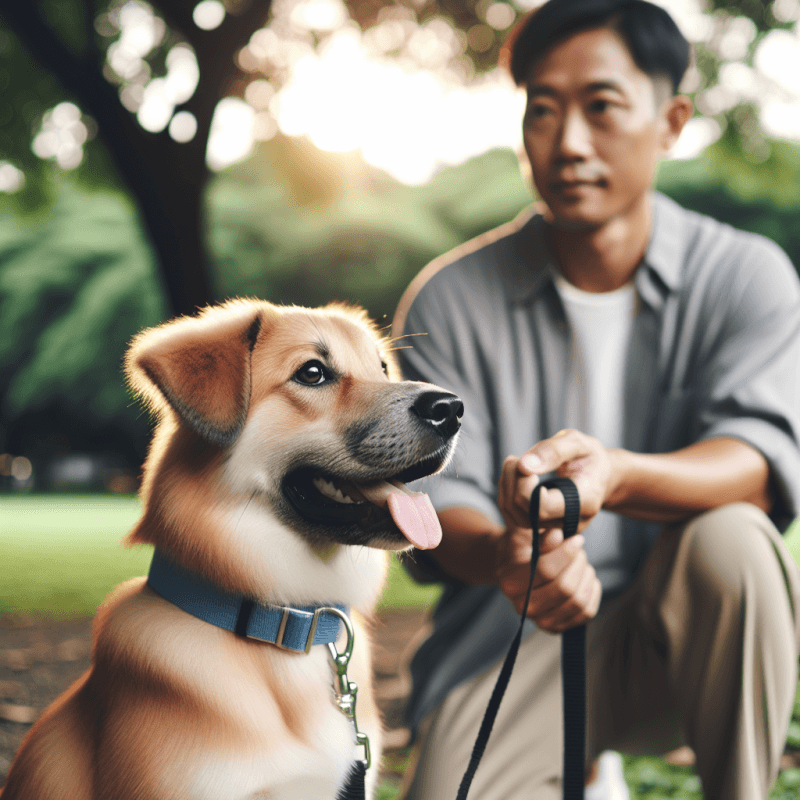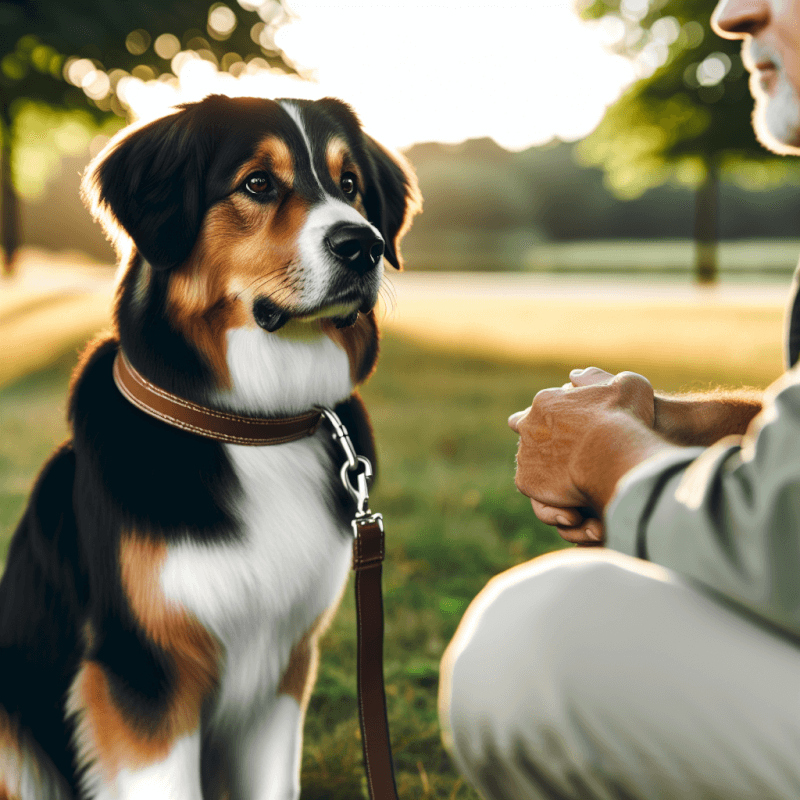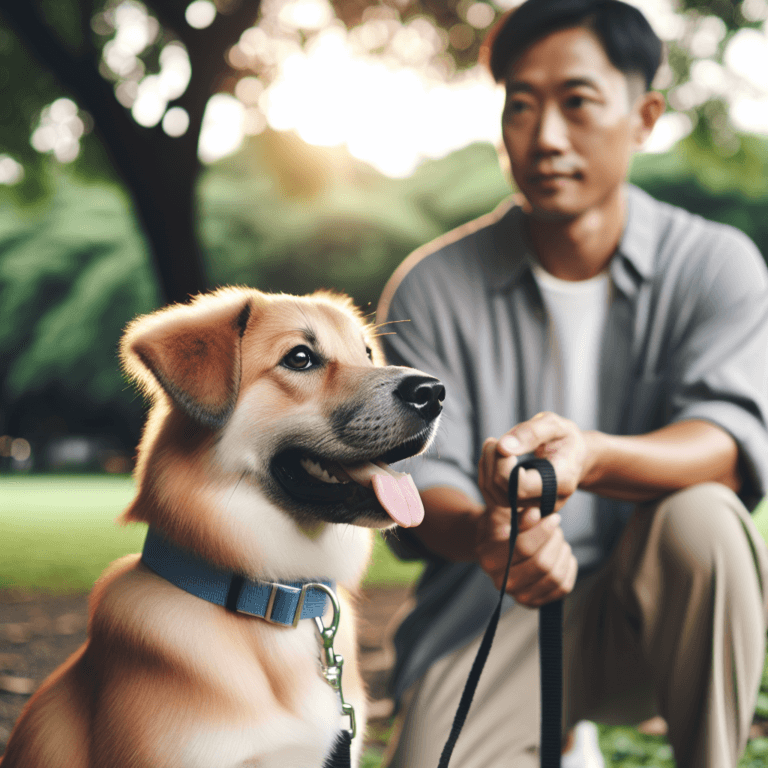If you’re searching for reliable and effective dog training behavior services in your area, look no further! Our article aims to provide you with valuable information and resources to assist you in finding the perfect dog training program near you. Confronting behavioral issues in your furry friend can be a daunting task, but with the right training methods and expertise, you can create a harmonious and balanced relationship with your canine companion. Dive into our article to discover the benefits of dog training, the different approaches utilized by trainers, and how to choose the best program for your pooch.
What is Dog Training?
Dog training is the process of teaching and conditioning dogs to follow commands and behave appropriately in various situations. It involves teaching commands such as sit, stay, come, and heel, as well as addressing any behavioral issues that a dog may have. Dog training is important for both the well-being of the dog and the safety and happiness of its owners. With proper training, dogs can become well-mannered, obedient, and enjoyable companions.
Ready for Cat Trivia?
Test your knowledge about cats!

Reasons for Dog Training
There are several reasons why dog training is essential. Firstly, training allows for effective communication between the dog and its owner. By teaching commands, owners can direct their dogs’ behavior and establish clear expectations. Secondly, training helps to prevent behavioral issues from developing or worsening. Dogs that receive proper training are less likely to exhibit behaviors such as aggression, excessive barking, or destructive chewing. Lastly, dog training promotes a strong bond between the owner and their pet. Through positive reinforcement and rewards, dogs learn to trust and respect their owners, resulting in a harmonious relationship.
Benefits of Dog Training
Dog training provides various benefits for both the dog and its owner. One of the primary benefits is improved obedience. Through training, dogs learn to respond to commands promptly and reliably. This not only ensures their safety but also allows them to participate in various activities such as walking off-leash or competing in obedience trials. Additionally, training enhances a dog’s socialization skills, making them more comfortable and well-behaved around other animals and people. Properly trained dogs are also less likely to exhibit destructive or undesirable behaviors, resulting in a more peaceful and enjoyable home environment. Overall, dog training improves the overall quality of life for both dogs and their owners.
Different Dog Training Methods
When it comes to dog training, there are various methods that trainers may use. Each method has its own philosophy and approach. It is important for dog owners to understand these methods and choose the one that aligns with their beliefs and desired outcomes for their dog. Here are some commonly used dog training methods:
Positive Reinforcement
Positive reinforcement is a popular and effective training method that focuses on rewarding desired behaviors rather than punishing undesirable ones. The trainer uses treats, praise, and rewards to reinforce the dog’s good behavior, making it more likely to be repeated in the future. This method emphasizes building a positive association with training and encourages dogs to make the right choices willingly.
Clicker Training
Clicker training is a specific form of positive reinforcement that uses a handheld clicker to mark and reinforce desired behaviors. The click sound is paired with a reward, such as a treat, to let the dog know that it has performed the correct behavior. The clicker serves as a precise and consistent way to communicate with the dog, enabling them to understand and learn commands quickly.
Alpha Dog Training
Alpha dog training, also known as dominance-based training, operates on the principle that dogs are pack animals with hierarchical social structures. This method focuses on establishing the owner as the alpha or pack leader and using dominance and submission techniques to control the dog’s behavior. While some trainers believe in this method, others argue that it can lead to fear and aggression in dogs.
Electronic Training Collars
Electronic training collars, often referred to as shock collars, are devices that deliver a small electric shock to the dog when a specific behavior is undesirable. The intensity of the shock can be adjusted, ranging from a mild vibration to a more intense shock. While some trainers find electronic collars effective in certain situations, they should only be used under the guidance of a professional trainer to ensure their proper and safe usage.
Prong Collars
Prong collars, also known as pinch collars, consist of a chain that tightens around the dog’s neck when pulled. The pressure applied is supposed to mimic the bite of a mother dog correcting her puppies. This collar is controversial, with some trainers advocating for its use in specific situations and others cautioning against it due to its potential to cause physical and emotional harm to the dog.

Choosing a Dog Trainer
When selecting a dog trainer, it is crucial to find someone who is experienced, qualified, and uses humane training techniques. Here are some factors to consider when choosing a dog trainer:
Qualifications and Experience
Look for trainers who have undergone professional training and have certifications or qualifications in dog training. Experience in working with dogs of different breeds and temperaments is also essential. A reputable trainer should have a solid understanding of dog behavior and be able to tailor their approach to suit individual dogs’ needs.
Training Techniques Used
Inquire about the methods and techniques the trainer employs. Ideally, you should choose a trainer who uses positive reinforcement and reward-based training methods. These methods promote trust, motivation, and enjoyment in the training process.
Client Testimonials and Reviews
Read reviews and testimonials from previous clients to get an insight into the trainer’s effectiveness and professionalism. Positive reviews from satisfied dog owners are an excellent indication of a trainer’s ability to deliver results.
Location and Availability
Consider the proximity of the trainer to your location. A conveniently located trainer can ease the logistics of attending training sessions regularly. Additionally, check the trainer’s availability and ensure they can accommodate your schedule.
Finding Dog Training Classes Near Me
If you prefer in-person training, there are several options for finding dog training classes near you:
Local Training Centers and Schools
Research local training centers and schools that offer obedience classes or specialized training programs. These establishments typically have qualified trainers who conduct group classes suitable for dogs of various ages and skill levels. Attending a group class allows for socialization opportunities and the chance to learn alongside other dog owners.
Online Dog Training Classes
In today’s digital age, online dog training classes have become increasingly popular and convenient. Many reputable trainers and organizations offer virtual training programs that allow you to train your dog from the comfort of your own home. These classes often provide detailed instructional videos, step-by-step guides, and personalized support to help you and your dog succeed.
Dog Training Apps
There are also numerous dog training apps available that provide comprehensive training resources and guidance. These apps offer training modules, demonstrations, and interactive features to assist dog owners in teaching their pets basic commands and addressing behavioral issues. Some apps even provide access to professional trainers who can provide personalized advice and feedback.

Behavioral Issues in Dogs
Behavioral issues can arise in dogs for various reasons, including fear, anxiety, lack of socialization, boredom, or past experiences. It is essential to recognize and address these issues promptly to ensure the well-being of the dog and a harmonious relationship with its owner. Here are some common behavioral problems in dogs:
Aggression
Aggression is a serious behavioral problem that can manifest in various forms, such as growling, snarling, biting, or lunging towards humans or other animals. Aggression can occur due to fear, resource guarding, territoriality, or frustration. Professional intervention is often necessary to address and manage aggressive behavior.
Separation Anxiety
Separation anxiety is a condition in which dogs experience extreme distress and anxiety when left alone. Symptoms may include excessive barking, destructive behavior, or soiling in the house. Separation anxiety can be alleviated through behavior modification techniques, desensitization, and providing dogs with mental and physical stimulation.
Excessive Barking
Dogs bark to communicate and express themselves, but excessive barking can become problematic for both the dog and its owner. It can be a sign of boredom, anxiety, fear, or a desire for attention. Training and behavior modification techniques can help teach dogs alternative ways to communicate and reduce excessive barking.
Chewing and Destructive Behavior
Chewing is a natural behavior for dogs, but when it becomes destructive, it can be frustrating and costly for owners. Destructive behavior may be a result of teething, boredom, anxiety, or lack of appropriate outlets for chewing. Providing dogs with suitable chew toys, proper exercise, and mental stimulation can help redirect their chewing behavior.
Housebreaking Problems
Housebreaking problems, such as soiling indoors or not signaling the need to go outside, can be a common issue, especially with puppies. Consistent and positive reinforcement training methods, combined with a regular schedule for bathroom breaks, can effectively address housebreaking problems.
Addressing Common Behavioral Problems
When dealing with behavioral problems in dogs, it is essential to approach them with patience, understanding, and a well-thought-out plan. Here are some steps to address common behavioral problems:
Identifying the Root Cause
To effectively address behavioral problems, it is crucial to understand the underlying cause. Observe and analyze the situations that trigger the unwanted behavior. Identifying any possible triggers or patterns can help determine appropriate solutions.
Creating a Training Plan
Develop a training plan that focuses on positive reinforcement and rewards. Break down the desired behavior into small, achievable steps and gradually increase difficulty. Consistency in training methods and routine is key to reinforcing positive behaviors and discouraging negative ones.
Consistency and Patience
Consistency is vital in training. Ensure that everyone in the household follows the same training guidelines and enforces the same commands. It is important to be patient and understanding, as behavioral changes may take time. Celebrate small victories and provide plenty of praise and rewards along the way.
Seeking Professional Help
If the behavioral problems persist or are particularly severe, it may be necessary to seek the assistance of a professional dog trainer or animal behaviorist. These experts have the knowledge and experience to identify and address complex behavioral issues effectively. They can provide guidance tailored to the specific needs of both the dog and its owner.

Training Tips for Dog Owners
As a dog owner, there are several training tips that can help you establish a positive and successful training routine with your furry friend. Here are some valuable tips to keep in mind:
Establishing Leadership
Dogs thrive in a structured environment where they understand their place in the pack. Establish yourself as a calm and confident leader by setting clear rules and boundaries. Consistency in enforcing these rules will help your dog understand what behaviors are expected of them.
Socialization with People and Other Dogs
Socialization is crucial for dogs to develop appropriate behavior and overcome fear or aggression towards unfamiliar people or animals. Expose your dog to different environments, people, and dogs from a young age, using positive reinforcement techniques to reward confident and appropriate behavior.
Reward-Based Training
Reward-based training is highly effective and enjoyable for dogs. Use treats, praise, and toys as rewards for desired behaviors. This positive reinforcement encourages dogs to repeat the behavior in hopes of receiving more rewards.
Setting Realistic Goals
Set realistic training goals for your dog based on their individual abilities and temperament. Recognize that all dogs learn at their own pace, and some behaviors may take more time to master than others. Celebrate each small achievement, and build upon them to reach larger goals.
Building a Routine
Establishing a consistent training routine is essential for success. Dogs thrive on routine and predictability. Set aside dedicated time each day for training sessions and provide mental and physical stimulation outside of these sessions to keep your dog engaged and fulfilled.
Maintaining Training and Continuing Education
Once dogs have been trained, it is crucial to maintain their training and continue their education throughout their lives. Here are some ways to do so:
Reinforcement and Practice
Consistently reinforce the training commands and behaviors your dog has learned. Regular practice sessions will help solidify their training and ensure they don’t forget what they have learned. Incorporate training into everyday activities to keep their skills sharp.
Ongoing Training Opportunities
Enroll in advanced training classes or workshops to continue challenging your dog and expand their skill set. These opportunities provide mental stimulation, promote bonding, and strengthen the communication between you and your dog.
Attending Seminars and Workshops
Attend seminars and workshops led by renowned dog trainers and behaviorists to gain valuable insights and learn new training techniques. These events often cover a wide range of topics, from obedience training to specialized areas like agility or scent work.
Participating in Canine Sports or Events
Participating in canine sports or events, such as agility trials or obedience competitions, not only provides mental and physical stimulation for your dog but also helps reinforce their training in real-life situations. These activities foster a deeper bond between you and your dog and offer opportunities for continued learning and growth.

Case Studies and Success Stories
Case studies and success stories can provide inspiration and motivation for dog owners who are embarking on their training journey. Reading about the transformations and accomplishments of other dogs can demonstrate the effectiveness of training and encourage dog owners to persist. These stories serve as a reminder that with patience, consistency, and the right training techniques, any dog can overcome behavioral challenges.
Dog Training Transformations
Case studies often showcase dogs that have undergone significant behavioral transformations. These stories illustrate how training can turn a fearful or reactive dog into a confident and well-behaved companion. By understanding the journey and techniques used, dog owners can gain hope and insights into how to achieve similar results with their own dogs.
Testimonials from Happy Dog Owners
Testimonials from dog owners who have successfully trained their dogs can be a powerful endorsement for a particular trainer or training method. These testimonials highlight the positive impact that training has had on not only the dog’s behavior but also on the quality of life of the owners. Real-life success stories can provide assurance and motivation for dog owners seeking training solutions.
Common Dog Training Mistakes to Avoid
While dog training can be a rewarding experience, there are several common mistakes that dog owners should avoid to ensure the best outcomes for their dogs. Here are some common mistakes to steer clear of:
Lack of Consistency
Consistency is crucial in dog training. Inconsistency in enforcing rules and commands can confuse dogs and hinder their progress. All family members should be on the same page and consistently enforce the same training techniques and expectations.
Using Punishment as a Primary Training Technique
Using punishment as the primary training technique can have negative consequences and lead to fear or aggression in dogs. Instead, focus on positive reinforcement to encourage desired behaviors and redirect undesirable ones.
Skipping Basic Commands
Basic commands are the foundation of dog training. Skipping or glossing over these commands can result in gaps in a dog’s training and limit their ability to respond reliably in various situations. Ensure that your dog has mastered basic commands before moving on to more advanced training.
Neglecting Socialization
Socialization is essential in raising a well-behaved and well-adjusted dog. Failing to expose your dog to different environments, people, and animals can result in fear, aggression, or anxiety. Make socialization a priority from an early age to help your dog develop appropriate social skills.
Not Considering Individual Needs
Each dog has its own unique personality, temperament, and learning style. It is important to consider these individual needs when training your dog. Some dogs may require more time, patience, or specific training techniques to achieve desired behaviors. Tailor your training approach accordingly to set your dog up for success.
In conclusion, dog training is a vital aspect of responsible dog ownership. It allows for effective communication, prevents and addresses behavioral issues, and strengthens the bond between dogs and their owners. By understanding different training methods, finding a qualified trainer, addressing behavioral problems, and implementing effective training techniques, dog owners can ensure a happy, well-behaved, and well-adjusted canine companion. Remember to approach training with patience, consistency, and kindness, and celebrate the small victories along the way. With dedication and the right approach, you and your dog can achieve training success and enjoy a harmonious and fulfilling relationship.



